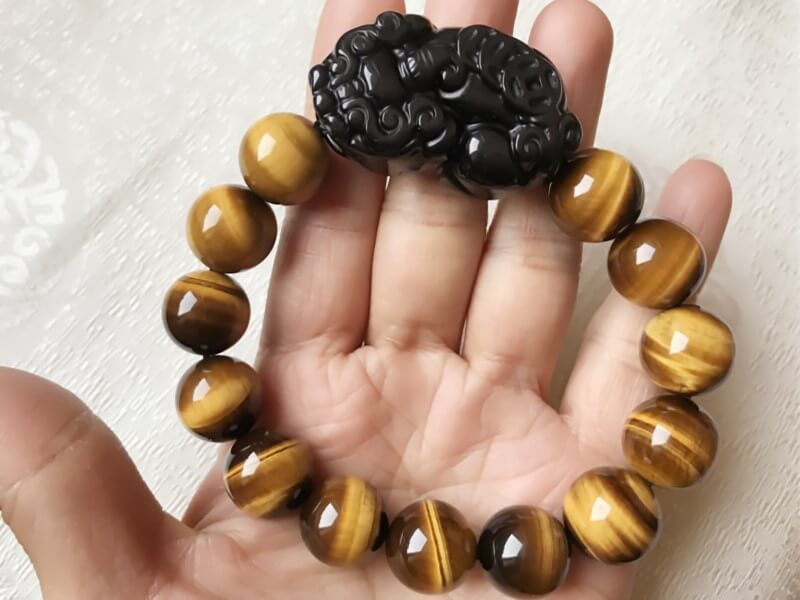Chinese Dragon Coin Master
1. Chinese Dragon Coinage |
- Chinese Dragon Card Coin Master
- Chinese Dragon Silver Coins
- Chinese Dragon Coin Master Coin
- Chinese Dragon Coin Master Apk
- Chinese Dragon Dollar Coin

Silver Dollars
A Chinese dragon, also known as Loong, Long or Lung, is a legendary creature in Chinese mythology, Chinese folklore, and Chinese culture at large. Chinese dragons have many animal-like forms such as turtles and fish, but are most commonly depicted as snake-like with four legs.They traditionally symbolize potent and auspicious powers, particularly control over water, rainfall, typhoons, and floods. Chinese Dragon Restrike Coins; Chinese Dragon Restrike Coins. Show Items 40 80 120. Gold (7) Silver (17) Price. $25 to $99 (8) $100 to $499 (6) $1,000 to $2,500 (2) Over $2,500 (7) Product Type. Round (18) Specimen Coin (1) Product Line. Chinese Commems (18) Gold Rounds. The Szechuan-Shensi Soviet dollar was struck in 1934 with hand-crafted dies at the Red Army Mint built in the Wangcang county (旺苍县) of Guangyuan (广元市), and were as much an instrument of propaganda as an instrument of payment.That politically charged currency, stamped with the symbol of the hammer and sickle spreading all over China and surrounded by the famous rallying cry.
I don't own this video, I just really likes this video and I hope more people see it and like it!
For 2000 years, from the reign of Qin Shi Huang (Shih Huang-Ti, 221-207 BC), Chinese coins consisted of cast bronzes or brass, with a central square hole. Although inflation necessitated the occasional issue of multiples, such as the 50 cash coins of the emperor Xian Feng (Hsien Fêng, 1850-1861), this was still the system at the start of the reign of Guang Xu (Kuang Hsü) in 1875.
By the mid-19th Century international trade with Western powers had grown significantly and was largely conducted in silver dollars such as the American 'eagle' dollar and the Mexican 8 reals. Some Chinese silver coins based on the dollar standard were first minted by the military authorities in Zhangzhou (Changchow), Fujian Province, as early as 1844, in the reign of Dao Guang (Tao Kuang). Other silver coins were issued in the provinces of Taiwan (Formosa), Hunan, Jiangxu, Jilin and Xinjiang (note 1).
In 1888 the Qing (Ching or Manchu) government authorised Zhang Zhidong, Governor-General of Guangdong and Guiangxi provinces, to mint silver dollars. These initially weighed 0.73 tael (7 mace and 3 canderins), equivalent to circa 28 grammes, reduced three years later to 0.72 tael(note 2)(25 grammes) and were minted by the Guangdong Silver Dollar Bureau. They were the first official Chinese dollars.
When Zhang Zhidong was appointed Governor-General of Hunan and Hubei in 1893 (year 19 of Guang Xu), he set up a mint in Wuhan (Wuchang) which also minted silver dollars. In 1896 (year 22 of Guang Xu) Bei Yang (Pei Yang, another name for Zhili province) produced some trial pieces, and commenced full production the following year. These were minted by the Bei Yang Machine Bureau in Tianjin (Tientsin) and were marked 'Pei Yang Arsenal'. In the 33rd year of Guang Xu (1907) the bureau changed its name to the Bei Yang Mint, with a further change to the General Mint in 1910 (2nd year of the emperor Xuan Tong). Coins with the inscription in English 'Tai-Ching Ti-Kuo Silver Coin' were produced at this mint.
Above: Dragon dollar produced by Bei Yang, Year 34 of Guang Xu (1908)
In 1898, the mints of Nanjing (Nanking) and Suzhou (Soochow) began producing dollars for the region of Jiangnan (Kiangnan), which comprised the three provinces of Jiangsu, Anhui and Jiangxi. The same year the province of Anhui also produced dollars in its own name. The Chengdu mint in Sichuan began minting silver dollars in the 24th year of Guang Xu (1898). It also produced the lighter silver rupees bearing a portrait of the emperor (see below). In the same year, the Fengtian Machine Bureau in Shenyang (Mukden) also began minting dollars for Manchuria (the north-eastern provinces of Jilin, Liaoning and Heilongjiang), with others by Jilinin its own right. Circa 1902 silver dollars were minted in Chekiang province.
Above: Dragon dollar produced in Sichuan province
Examples of Chinese Dollars
Province/Region Bei Yang (Zhili)
Fengtian Guangdong Hubei Jiangnan Jilin Sichuan Zhejiang (Tianjin mint) | English Legend PEI YANG ARSENAL AN-HWEI PROVINCE FUNG-TIEN PROVINCE KWANG-TUNG PROVINCE HU-PEH PROVINCE KIANG NAN PROVINCE KIRIN PROVINCE SZECHUEN PROVINCE CHEH-KIANG PROVINCE ONE DOLLAR | Date TWENTY SECOND YEAR OF KUANG HSÜ (Year 24 of Kuang Hsü ) (Year 24 of Kuang Hsü) Undated Undated Undated (Dragon inside a circle) (1899 in Chinese sexagenary cycle characters) Undated (Year 3 of Xuan Tong) (Year 3 of Xuan Tong) |
TAEL STANDARD COINS
In addition to the silver dollar, a number of large silver coins were minted on a trial basis at a weight of one tael at Tianjin (Tientsin) during 1903. They show the weight in Chinese characters, the name of the Minstry of Finance, HU POO and bear the date 29th YEAR OF KUANG HSÜ. More one tael coins were minted in 1904 (30th year of Guang Xu) with HU PEH PROVINCE and the weight stated in English ONE TAEL. Others were minted in 1906 (32nd year of Guang Xu) with the intention that they would become the standard coin. A complete set of coins based on the one tael standard were produced with values of one tael, 5 mace, 2 mace and the legend TAI-CHING-TI-KUO (Great Ching Empire) SILVER COIN. In conjunction with these coins a large gold coin, also with a weight of one tael, was minted in 1907, together with smaller denominations of two and one mace, all bearing their weight in Chinese characters. Allegedly, most of these coins were used to pay the army. Xinjiang also minted silver coinsof one tael at Kashi (Kashgar) in 1905 together with a gold coin of 5 mace.
SICHUAN RUPEES
These coins were minted at Chengdu mint, Sichuan Province, to combat the influx of Indian rupees that had flooded the province in the last decade of the 19th Century. They were unique in that they bore the half-length portrait of the Emperor Guang Xu on the obverse, the first and only such representation of an emperor on Chinese coins. The reverse design consisted of an elaborate floral pattern with the Chinese characters meaning 'Sichuan Province made' in the centre. First minted in 1903, the rupee coinage consisted of three denominations, one rupee (weighing circa 11.4 gm), half rupee (5.7 gm) and quarter rupee (2.8 gm). The two smaller denominatiuons are extremely rare nowadays. Despite the Sichuan mark these coins are sometimes attributed to Tibet and listed there in some catalogues.
SMALLER SILVER DENOMINATIONS
Silver coins with a weight of 7.2 candarins, in other words a tenth of a dollar and therefore often referred to as ten cents pieces, were minted in parallel with the dollar. The most commonly encountered are those of Guangdong (marked KWANG-TUNG PROVINCE) and are undated. Coins with a weight of 1 mace and 4.4 candarins (fifth of a dollar, 20 cents) were also produced in Guangdong, Jiangnan (KIANG NAN PROVINCE) and Hubei (HU-PEH PROVINCE). These coins too, are undated. Twenty cents coins of Fujian (Fukien) were minted in 1902. Guangdong,Yunnan and Hubei also minted half-dollars or 50 cents, marked with a value of 3 mace and 6 canderins. Other small silver coins were minted with a weight of 3.6 candarins (5 cents).
Chinese Dragon Card Coin Master
Above: Guangdong fifth of a dollar (1 mace and 4.4 candarins)
BRONZE COINAGE
Bronze coins valued at 10 cash (the old coins with a central square hole) or one cent were first minted during the 26th year of Guang Xu (1900) in Guangdong and eventually spread to fifteen bureaus in fourteen provinces by 1905. The reverse design consisted of a variety of dragons, the number of different types being estimated at circa 350. Some of these coins were minted in brass, presumably from melted down cash coins. Smaller numbers were produced with values of 20, 5, 2 and 1 cash and are consequently much harder to find.
Above: Ten Cash coin of Hubei Province
In 1905, the designs were changed, replacing the emperor's name with the Chinese characters for Da Qing ('Great Ching') and the two characters either side with Tong Bi ('bronze coin'). These new coins were in four different denominations, valued at 20, 10, 5 and 2 wen (cash) of standard bronze coins and weights of 0.4, 0.2, 0.1 and 0.04 of a tael. These Ta Ching coins, and those that followed, are slightly larger and thicker than the earlier milled coinage. They were first introduced by the Tianjin mint, now renamed as the General Mint of the Ministry of the Interior and Finance, with the reverse legend in English TAI-CHING-TI-KUO COPPER COIN and the emperor's name above in Chinese characters. Similar coins were produced in the provinces. Most bear two Chinese characters, one either side of the obverse denoting the date based on the sexagenary cycle. In the example illustrated below these characters appear in the 3 o'clock and 9 o'clock positions on the obverse and are equivalent to 1907. Coins produced other than in Tianjin usually bear a small mintmark character in the centre of the obverse on a raised circular disc.
Above: Ten cash coin marked 'TAI-CHING-TI-KUO COPPER COIN'
During the second year of Xuan Tong (1910) another three denominations were added, of two fen (cents), one fen and half a fen.
Above: Ten wen (cash) coin of Xuan Tong issued in 1911 (year 3)
Appendix I - Chinese Provinces issuing Dragon coins

Pinyin name | Former spelling | English name on coins |
Anhui | Anhwei | AN-HWEI |
Fujian | Fukien | FOO-KIEN, F K CUSTOM HOUSE |
Fengtian (note 3) | Fengtien | FUNG TIEN, MANCHURIAN PROVINCES |
Guangdong | Kwangtung | KWANG-TUNG |
Henan | Honan | HO NAN |
Hubei | Hupeh | HU-PEH |
Hunan | Hunan | HU-NAN |
Jiangnan (note 4) | Kiangnan | KIANG NAN, KIANG-NAN |
Jiangsu | Kiangsu | KIANG-SOO |
Jiangxi | Kiangsi | KIANG SEE, KIANG-SEA, KIANG-HSI |
Jilin | Kirin | KIRIN |
Shandong | Shantung | SHANTUNG, SHAN-TUNG |
Sichuan | Szechuan | SZECHUEN, SZE CHUEN |
Xinjiang | Sinkiang | CHING KIANG |
Yunnan | Yunnan | YUN-NAN |
Zhejiang | Chekiang | CHEH-KIANG |
Zhili | Chihli | PEI YANG ARSENAL, PEI YANG |
Tianjin mint | Tientsin | HU POO (Ministry of Finance) |
Appendix 2 - Regions
Pinyin name Dongbei | Former name Manchuria | Provinces Liaoning, Jilin and Heilongjiang |
On coins with the legend 'Manchurian Provinces' the name in Chinese characters is 'Three Eastern Provinces'
Appendix 3 - Emperors issuing Dragon coins (Throne names)
Name (Pinyin) Guang Xu | Former name Kuang-Hsü | Date 1875 -1908 |
Chinese Dragon Silver Coins
Appendix 4 - Provinces issuing silver Dragon coins (note 5)
Province | 5 | 10 | 20 | 50 | Dollar | Tael |
Anhui | x | x | x | x | x | |
Fengtian | x | x | x | x | x | |
Fujian | x | x | x | |||
Guangdong | x | x | x | x | x | |
Hubei | x | x | x | x | x | x |
Hunan | x | x | x | |||
Jiangnan | x | x | x | x | x | |
Jilin | x | x | x | x | x | |
Manchurian Provinces | x | x | x | x | ||
Sichuan | x | x | x | x | x | |
Yunnan | x | x | x | |||
Zhejiang | x | x | x | x | x | |
Zhili (Pei Yang) | x | x | x | x | x | x |
Appendix 5 - Provinces issuing Dragon cash coins (copper, brass) other than Tai-Ching-Ti-Kuo coins (note 6)
Chinese Dragon Coin Master Coin
Province | 1 | 2 | 5 | 10 | 20 |
Tianjan mint (Hu Poo) | x | x | x | x | |
Anhui | x | x | x | ||
Fengtian | x | x | |||
Fujian | x | x | x | x | x |
Guangdong | x | x | |||
Henan | x | x | |||
Hubei | x | x | x | x | |
Hunan | x | ||||
Jiangnan | x | x | x | x | |
Jiangsu | x | x | x | ||
Jiangxi | x | ||||
Jilin | x | x | x | ||
Shandong | x | x | |||
Sichuan | x | x | x | ||
Xinjiang | x | x | |||
Yunnan | x | ||||
Zhejiang | x | x | x | ||
Zhili (Pei Yang) | x | x | x |
Appendix 6 - Provinces issuing Tai-Ching-Ti-Kuo copper coins (note 7)
Province | 5 | 10 | 20 |
Tianjan mint | x | x | x |
Anhui | x | x | |
Fengtian | x | x | |
Fujian | x | ||
Guangdong | x | ||
Henan | x | ||
Hubei | x | x | x |
Hunan | x | ||
Jiangnan | x | x | |
Jiangsu | x | x | x |
Jiangxi | x | ||
Jilin | x | x | |
Shandong | x | ||
Sichuan | x | x | |
Yunnan | x | x | |
Yunnan/Sichuan | x | x | |
Zhejiang | x | x | x |
Zhili (Pei Yang) | x | x | x |

Appendix 7. Equivalent years of Chinese dates on 5, 10 and 20 cash Tai-Ching-Ti-Kuo copper coins
Chinese Dragon Coin Master Apk
Province | 1905 | 1906 | 1907 | 1908 | 1909 | 1910 | 1911 |
Tianjin mint | 5, 10, 20 | 5, 10, 20 | 5, 10, 20 | 5 | 5, 10, 20 | ||
Anhui | 10, 20 | 10 | |||||
Fengtian | 10, 20 | 10, 20 | 5, 10, 20 | ||||
Fujian | 10 | 10 | |||||
Guangdong | 10 | 10 | 10 | 10 | |||
Henan | 10 | 10 | |||||
Hubei | 5, 10, 20 | 10 | |||||
Hunan | 10 | ||||||
Jiangnan | 5, 10 | 10 | 10 | ||||
Jiangsu | 5, 10, 20 | ||||||
Jiangxi | 10 | ||||||
Jilin | 10 | 10, 20 | |||||
Shandong | 10 | ||||||
Sichuan | 10, 20 | 10, 20 | |||||
Yunnan | 10, 20 | ||||||
Yunnan/Sichuan | 10, 20 | ||||||
Zhejiang | 5, 10, 20 | ||||||
Zhili (Pei Yang) | 5, 10, 20 |
Notes:
1. Xinjiang (Sinkiang) was the north-western province of Turkestan. It was conquered by Ch'ien Lung and added to the Chinese Empire under the name Hsi Ju. In the mid-19th century it was semi-independent under Yakub Beg, but after this death in 1877 it was reconquered and became the Chinese province of Sinkiang in 1884.
Chinese Dragon Dollar Coin
2. The tael, weighed approximately 38 grammes and was worth 10 mace or 100 canderins
3. Fengtian province was renamed Liaoning during the Republic. Coins with the legend MANCHURIAN PROVINCES were minted after the mint combined with that of Jilin.
4. Jiangnan (Kiangnan) comprised the provinces of Jiangsu, Anhui and Jiangxi
5. Xinjiang Province also issued silver coins based on the Tael system in denominations of one, two, three, four and five miscals (mace) and one tael, as well as the one rupee coins. Hunan province also minted coins of one, two, three, four, five, six, seven, eight and nine ch'ien (mace) and one liang (tael). Jilin Province also minted coins of 1, 3, 5 and 7 ch'ien and one tael. The style of all these are totally different from the Dragon coinage and are not included here.
6. Some of the one and two cash coins properly belong to the Tai-Ching-Ti-Kuo coinage but are not marked as such.
7. These coins span the period 1905-1911 and therefore can occur with the reign mark of Guang Xu or Xuan Tong